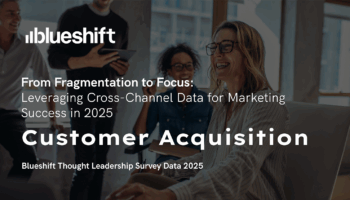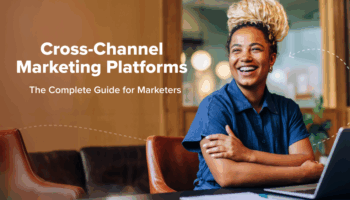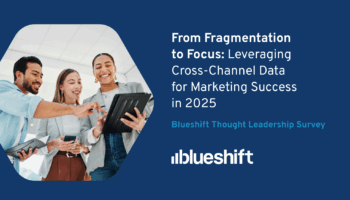We’re in a new era of digital marketing. Cookie. based targeting is crumbling, acquisition costs are rising, and customer expectations? Through the roof. The brands that win aren’t the ones with the most data they’re the ones who can activate it in the right place, at the right time.
Audience syndication solves for this gap. It’s how brands activate their first-party data and in real-world execution. It’s more than a checkbox in your platform . it’s the mechanism that transforms your first-party insights into targeted, efficient, revenue-generating campaigns across Google, Facebook, TikTok, and beyond.
It’s also what differentiates today’s agile marketing teams from those still stuck uploading static spreadsheets to ad platforms.
So what does great syndication actually look like in the wild? We analyzed hundreds of audience strategies from leading brands across industries. Here’s what’s really happening behind the scenes and how you can level up.
TL;DR
Audience syndication is the key to unlocking the full potential of your first-party data. By dynamically syncing rich customer segments such as predictive scores, behaviors, and lifecycle stages across platforms like Google, Facebook, and TikTok, marketers can improve ROAS, lower CAC, and increase retention. Use cases include acquisition, retargeting, win-back, suppression, and cross-sell campaigns. As brands move from static lists to real-time activation, audience syndication is becoming essential for scalable and personalized marketing across channels.
What Are the Benefits of Audience Syndication for Marketers?
At its core, audience syndication is one of the most powerful ways to activate your first-party data. It connects your rich internal datasets from your CRM, website, mobile app, email engagement, and predictive models, often unified through a Customer Data Platform (CDP) — directly to the paid channels where customers are most active. This goes beyond data transfer; it’s data in motion, ready to power smarter acquisition, retargeting, and retention efforts at scale.
Audience syndication is no longer optional — it’s fast becoming a non-negotiable part of modern growth marketing. Here’s why:
- Better ROAS: Deliver hyper-targeted ads to segments built on real-time behavior and predictive scores.
- Smarter CAC: Suppress low-quality leads or customers who’ve already converted.
- Speed to Market: React instantly to behavioral signals — no manual list uploads, no waiting.
- Retention Power: Re-engage lapsed customers where they’re active (and scroll-happy).
- Cross-Channel Cohesion: Keep messaging consistent across email, social, and display with synchronized segments.
- Personalization at Scale: Leverage affinities, historical purchases, and predictive insights to create personalized experiences across channels.
- Marketing Efficiency: Free your teams from repetitive workflows with automated syncing and always-on segment logic.
And the benefits are compounding. Brands that activate data dynamically are running better campaigns and building long-term systems — they’re building flywheels of continuous learning and optimization across all touchpoints.
Here’s what the data says: According to IAB’s State of Data 2024 report, 71% of brands, agencies, and publishers are actively increasing their first-party data sets in response to privacy shifts — with those investing aiming for an average 35% growth over the next 12 months.
And according to Blueshift’s Report, 89% of marketers say activating first-party segments across paid and owned channels has become a key differentiator for improving retention and performance.
What Audience Segments Do Top Brands Syndicate Across Ad Platforms?
The best-performing marketers aren’t exporting spreadsheets — they’re dynamically syncing smart segments every day. And they’re doing it across lifecycle stages, purchase behavior, predictive models, and more. Here’s what these segments typically look like:
- Financial Product Interest: Think “Home Equity Seekers with 700+ Credit Score.” Used by brands to combine intent and qualification signals for max efficiency.
- Lifecycle & Status: “Lapsed Subscribers.” “First-Time Purchasers.” “Loyal App Users.” These segments carry strategic weight — they power personalized lifecycle strategies across paid channels.
- Predictive Scores & Affinities: Many brands are tapping into AI-powered scores — like “Propensity to Buy”, “Churn Risk”, or “Projected LTV” — to concentrate spend on segments that are more likely to convert.
- Behavioral Triggers: Website and app actions like “Viewed Product X,” “Started Checkout but Didn’t Finish,” or “Browsed Category Y” fuel retargeting segments that act fast and stay relevant.
- Category Shoppers & Brand Buyers: Ecommerce brands, including Sweetwater and Goldbelly, syndicate segments like “Guitar Enthusiasts” or “Pizza Lovers” to keep product recommendations hyper-personalized.
- Suppression Segments: Smart marketers understand both who to reach and who to avoid. Suppressing recent buyers, unsubscribed users, or low-intent browsers reduces waste and improves campaign focus.
- Demographics & Geography: Combine location, income bands, or other profile data with behavioral triggers for geo-personalized campaigns.
How Leading Brands Use Audience Syndication: Real-World Examples
These brands are syndicating strategy, not just lists — they’re syndicating intent, timing, and value.
LendingTree
- Strategy: Combines loan intent, credit score bands, and predictive scores to find and convert high-value prospects.
- Scale: 89+ active segments across Google, Facebook, Criteo, and TikTok.
- Result: Smarter prospecting, better conversions, and more efficient spend.
Stitch Fix
- Strategy: Uses syndication to power retention A/B tests (treatment vs. control) for dormant segments — down to the gender or product level.
- Result: Scaled win-back programs with clear performance data tied to each test.
Goldbelly
- Strategy: Targets users who previously bought from specific restaurants (e.g., “Piecaken Buyers”) to drive timely reorders.
- Result: Higher repeat rates and stronger brand recall via merchant-specific segments.
Sweetwater
- Strategy: Cross-sells accessories by identifying gaps (e.g., “Bought a mic, no stand”) and builds predictive CLTV models by product type.
- Result: Increased AOV and more strategic customer nurturing.
Five Below
- Strategy: Uses seasonal and category-specific segments (e.g., “Holiday Toy Shoppers”) across multiple platforms.
- Result: Consistent lift across peak campaigns, with efficiency from HHI and RFM segmentation.
What Are the Top Use Cases for Audience Syndication in Marketing?
Audience syndication is about more than just syncing audiences — it’s about orchestrating the full customer journey across paid and owned channels. Here’s how marketers are making the most of it:
- Customer Acquisition: Prospect smarter with lookalike audiences modeled on your best converters. Layer in demographic, behavioral, and predictive traits to get high-quality leads from the start.
- Behavioral Retargeting: Recapture attention from users who browsed but didn’t buy, added to cart and abandoned, or started a form but didn’t complete it.
- Retention & Win-Back: Push re-engagement campaigns to users who’ve gone dormant, but still fit your ideal profile — and test which messages work best with A/B segmentation.
- Cross-Sell & Upsell: Use known purchase data to suggest complementary products or upgrades. For instance, if someone bought a camera but not a lens, send that reminder via TikTok or Facebook.
- Audience Suppression: Keep budgets focused by excluding customers who recently converted or who’ve opted out — this is often the biggest lever for improving ROAS.
- Lifecycle-Based Journeys: Extend lifecycle marketing across channels by targeting segments like “New Customers”, “High-Value Repeat Buyers”, or “Churn-Risk Users” with tailored messages.
- Always-On Optimization: With dynamic syncing, audience lists update automatically based on behavior, status, or scores — meaning your campaigns stay fresh without manual work.
How Audience Syndication Is Changing Digital Marketing Today
We’re watching the market move from:
- Uploading static lists to Real-time syncing with external platforms
- One-channel thinking to Unified cross-channel orchestration
- Simple segments (e.g., “All Customers”) → Rich, predictive audience models
And this shift is accelerating. According to internal Blueshift data, some customers update and syndicate 100+ segments weekly, each optimized for a specific stage, campaign, or platform.
Marketers are now orchestrating data-driven experiences — they’re deploying data intelligence across every customer touchpoint.
How to Use Audience Syndication to Maximize First-Party Data
If you’re still manually uploading lists or relying on basic retargeting, you’re falling behind. The brands that scale smarter are the ones turning segmentation into a competitive edge — and audience syndication is how they do it.
Want to see how Blueshift customers like LendingTree, Sweetwater, and others are pulling this off? Request a demo to explore how Blueshift can transform your campaigns.




